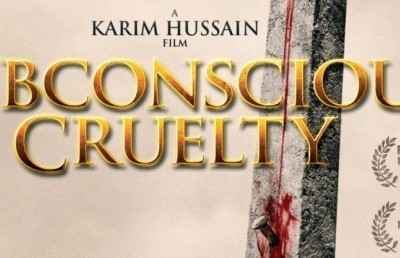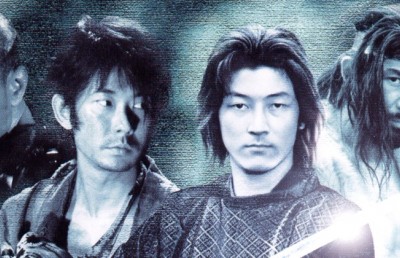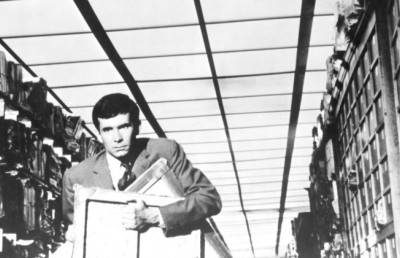Black Sunday on DVD
Image Entertainment
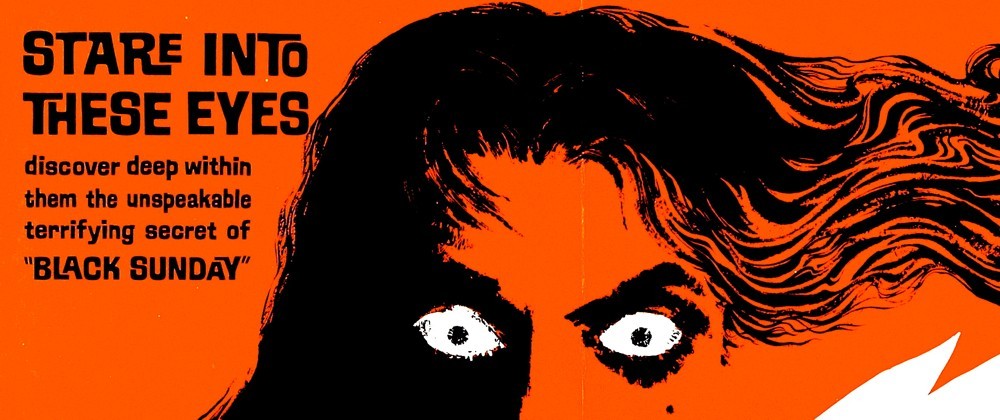
Special Features:
- Widescreen 1.66, enhanced 16 × 9
- Audio Commentary by Tim Lucas
- Director Biography and Liner Notes by Tim Lucas
- Director and Cast Filmographies
- Theatrical Trailer
- Photo and Poster Gallery
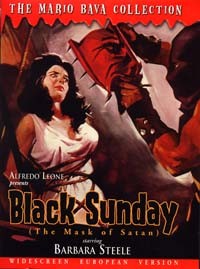
Image Entertainment presents for the first time in North America, the uncut, English dub version of Mario Bava’s gothic masterpiece, The Mask of Satan (re-titled Black Sunday by AIP for its US release in 1961). Anyone who has not seen this film will be taken aback by its stunning black and white visual beauty, represented here in a pristine transfer where the blacks hold firm and the crispness renders a depth of clarity and detail to every frame. The film, loosely based on the 1835 ghost story by Ukrainian writer Nikolai Gogol, “The Vij,” begins with a 17th prologue where a witch named Asa is viciously executed by the local inquisitor with the titular mask spiked into her face. Up until this moment, the scene recalls the glorious expressionist atmosphere of the 1930’s Universal horror films, especially the opening of James Whale’s Frankenstein (1931). But the execution raises the stakes (excuse the pun) in terms of graphic intensity and explicit horror, and in a sense forges a transition between the implied violence of the pre-1960’s horror film and the post-1970’s graphic Italian horror film. The hammering of the spiked mask onto Asa’s face is cleverly edited through different camera set-ups and point of views to render maximum possible viscerality. As an added note with regards pedigree, the scene’s function and placement in the narrative structure is identical to the prologue in Fulci’s The Beyond (execution of a witch; Universal-styled atmosphere plus graphic denouement). As is the case with any cinematic witch-hunt, dating as far back as Carl Dreyer’s seminal Day of Wrath (1943), you know a curse is in order.
And indeed the film flashforwards to the early 19th century to the descendents of the cursed Vajda family, led by the patriarch prince Vajda (Ivo Garrani). Before we are introduced to the family, we meet two other principal characters, a young doctor Andrej Gorobek (John Richardson) and his teacher, doctor Kruvajan (Andrea Checchi). Their coach runs off the road and they venture into a nearby family crypt while the driver mends the coach wheel. This scene can serve as a microcosm for some of the film’s visual and stylistic motifs, and demonstrates the efficient manner in which Bava uses visual detail (art direction, camera movement, framing, etc.) to render narrative and thematic information. As the two doctors walk down the crypt stairs, their bodies cast a huge wing-shaped shadow on the wall, an eerie effect which foreshadows the bat which will soon attack doctor Kruvajan. The camera does not rest on the two figures but performs a slow 360 degree dolly that introduces the crypt space, taking us past imposing stone columns, arched passageways, tombs, spider webs, and ending back on a closer two shot of the doctors. This “assertive” camera movement away from subjects is the first of many that Bava will use throughout the film (and his career), and of course has become a staple of the horror film as an enunciator of dread or a supernatural presence. Bava uses it a second time in this scene when the older doctor, Kruvajan, is left alone in the crypt. He is looking into Asa’s tomb, as he is able to see her mask covered face through a glass opening in the lid. The camera again moves away from the doctor and tracks screen right into a dark hole in the wall that blackens the frame. This movement into and/or away from black holes and spaces will become a central visual trope in the film, serving to signal a source of danger or hidden evil. The shot cuts back to the doctor, and out from the black hole comes a large vampire bat that attacks the doctor. Apart from the chill effect, the bat attack serves a specific narrative function. The doctor fires a gunshot at the bat, causing it to fall onto Asa’s tomb. He then finishes killing the bat with his cane, smashing through the glass covering Asa’s face in the process. The gunfire brings doctor Gorobek back into the crypt, and they soon leave together to return to the coach. Meanwhile blood from Kruvajan’s cut hand drips from the tip of a broken piece of glass into the dead Asa’s eyes, setting in motion the witch’s resurrection. The fact that it is Kruvajan’s blood that brings her back to life also establishes a link between the two characters and foreshadows Kruvajan as Asa’s first vampiric victim.
The subterranean setting of this scene, and its access from a secret passageway behind a fireplace, also served as an influence on later Italian masters like Dario Argento, Lucio Fulcio, and Michele Soavi, who would use similar settings across their films (Fulci’s zombie trilogy, Inferno, Stendhal Syndrome, Opera, Phantom of the Opera, Wax Mask, The Church, etc.)
On their way to the coach they encounter, in full dramatic fashion, Asa’s descendent, princess Katia, standing atop a hill dressed in black in the company of a large black hound dog. By introducing Katia in this visual fashion, Bava cleverly subverts horror iconography by presenting the virginal Katia in the dark colors usually associated with evil. Bava would play this card again in Kill, Baby Kill (1966) by depicting the malicious seven-year old ghost as an angelic, blond-haired girl dressed in white. Playing the dual roles of Asa and Katia is the young Barbara Steele, whose odd beauty would soon become the female horror iconic visage par excellence. What also makes her performance of historical note, is how it represents a rather rare case of a female döppelganger in the horror/thriller/fantasy genres. Although there have been well over one hundred male döppelganger’s, the idea of splitting up a female psyche has been far less common. The first, to my knowledge, being Brigitte Helm’s classic Maria/robot Maria performance in Fritz Lang’s Metropolis (1926). Others that come to mind are: Olivia De Havilland as twin sisters in The Dark Mirror (1946, Robert Siodmak), Margot Kidder also playing twin sisters (one dead at birth) in Sisters (1973, Brain De Palma), Martine Beswick as one-half of a döppelganger in Dr. Jekyll and Sister Hyde (1972, Roy Ward Baker), and Negumi Okina as the two sisters Nami/Naomi (although one may be a boy) in St. John’s Wort (2001, Shimoyama Ten).
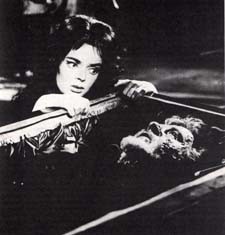
Bava’s artistry also includes subtle homages to horror film history. For example, the stamp of Whale’s Frankenstein is evident not only in the opening camera movement choreography and set design, but in the way the Asa’s resurrected demon lover Yavutich (Arturo Dominici) slumbers through the graveyard like Karloff’s monster, and (of course) the presence of the torchbearing townsfolk. The young girl’s walk from the bar to the barn through the night woods recalls many such atmospheric walks in the films of Val Lewton (and, as Tim Lucas points out in the commentary track, Walt Disney’s Snow White). On her way back from milking the cow the girl stops in the woods and looks out from behind a bush at the vampiric horse-drawn coach, riding past her in slow motion. This image inverses vampire Nosferatu’s fast motion coach ride in Murnau’s Nosferatu (1922). And, beyond the horror genre, Bava’s ineffectual priest character, played by Antonio Pierfederici, with his wild hair and impenetrable eyes, recalls the many such priests in the post-Revolution Soviet films of the 1920’s and 1930’s.
Something The Mask of Satan adds thematically to the horror film is the eroticization and seductive attraction of evil and, more specifically, the imagery and iconography of evil. No doubt, Bava was influenced by the recent releases from Hammer films, with Christopher Lee’s personification of Dracula bringing carnality to Bela Lugosi’s quainter sexuality. But in contrast to English culture, Bava’s imagery becomes especially interesting in concert with the strong Catholic tradition out of which most Italian horror films grow (don’t forget, this is a country that produced a sub-genre of tormented nun films!). And Bava spices the broth by adding a hint of necrophilia (which was cut out in the American release), a subtext which the Italian horror film would become particularly adroit in presenting (three necro-classics being Bava’s own The Whip and the Corpse, 1963, Riccardo Freda’s The Horrible Dr. Hitchcock, 1962, and Michele Soavi’s Dellamorte Dellamore, 1994). Add this all up and you have one of the genre’s most important and influential films. In fact, it makes one wonder whether there is a better single year for the horror film than 1960 (The Mask of Satan, Psycho, Peeping Tom, House of Usher, The Brides of Dracula, Blood and Roses, Mill of the Stone Woman)?
I would like to add a special mention of the excellent commentary track by the editor of “Video Watchdog” and author of the soon-to-be-published tome on Mario Bava, Tim Lucas. His running commentary is an exemplary mix of critical analysis and production history, moving from explication of particular prop meanings (paintings, icons, etc.) to information on production history. Of special interest is Lucas’ clear explanation of how certain special visual effects were achieved through Bava’s technical and artisanal genius (along with being a gifted cinematographer, Bava was one of Italy’s greatest special visual effects artists). If you want to impress the virtues of DVD technology on a friend or want a sample black and white film to test a new machine out, you could do no better than this DVD rendering of The Mask of Satan.



